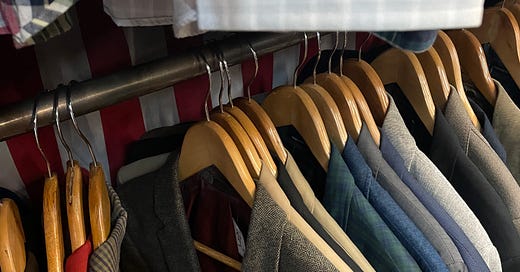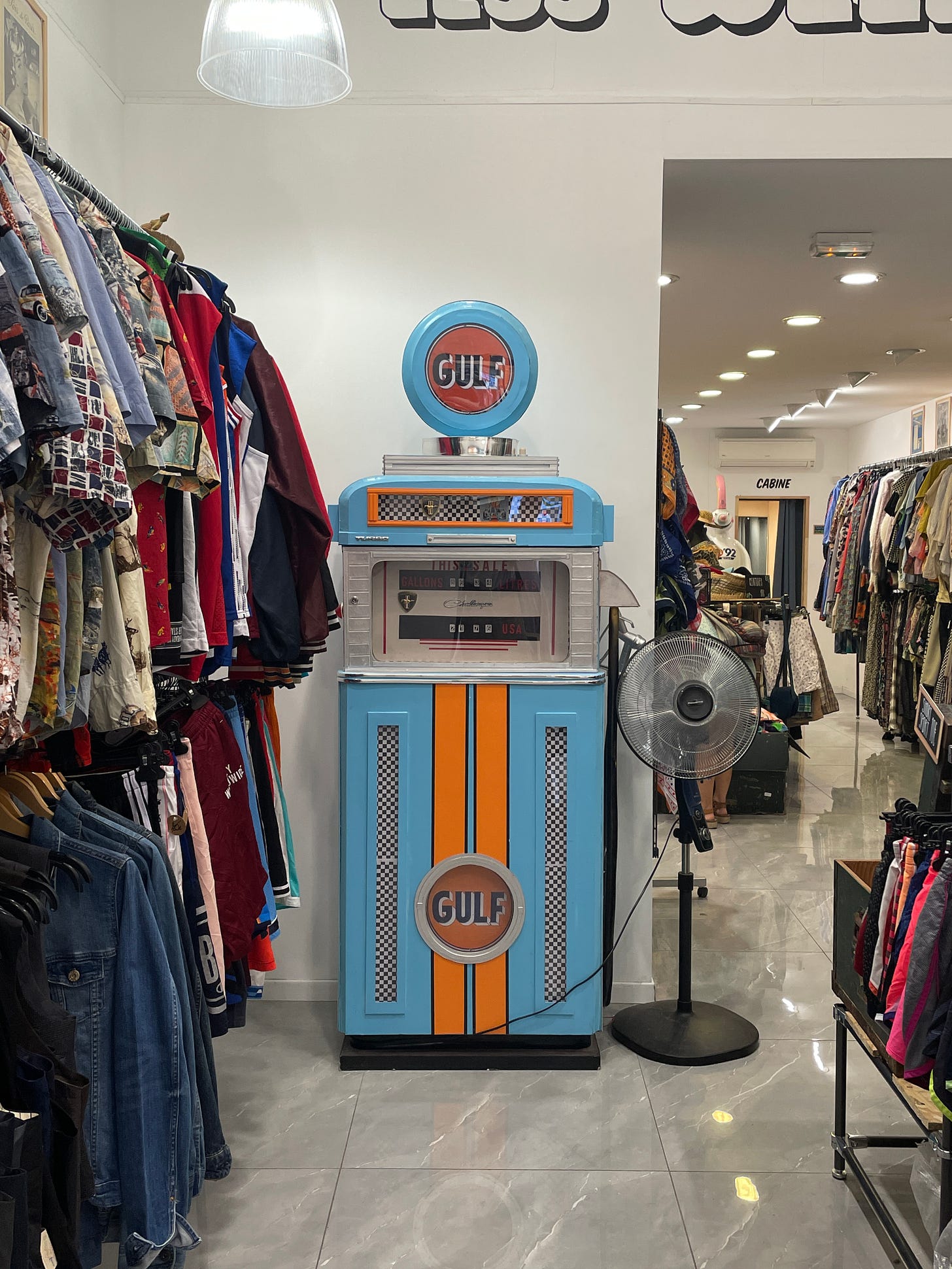How To Thrift Better Clothes
Applicable to charity and vintage shops, car-boots, kilo sales, etc.
Hello, I have called this meeting to raise a few tips in regard to the act of thrifting, charity shopping, if you’re a Brit like myself.
As a student, I am dressing on a budget, but even if I weren’t I think I’d still pick a lot up second hand. This is not the place for me to go into grand detail about the social and environmental benefits of thrifting, we can perhaps discuss those in another meeting, today I wish simply to make some recommendations to the club as to how it’s members might acquire better quality clothes in thrift shops.
Get used to going home empty handed
It is my personal belief that most regrettable thrifting purchases are made out of disappointment. If you can get comfortable with not always finding something, in fact, get comfortable with not finding something more often than than you do, then I wager you’re far more likely to be satisfied with the purchases you do make.
I feel as though thrifting is a primal activity, one notices it when digging through a box of scarves, it appeals to some hunter-gatherer instinct. I think that instinct might also be to blame for why we so often buy a piece we sort of like, just so as to not go home empty handed.
It’s ultimately a matter of patience, the savings you make by thrifting are made up for in the time you spend. Enjoy the searching process separately to the sense of reward gained by actually finding a piece, perhaps take the opportunity to listen to an album or invite some company.
Natural Fibres Only
Quite simply here, if it’s more than 50% polyester, it goes back on the rail. If it’s got polyester at all give it a good think*. We’re looking to acquire long lasting pieces, prioritising wool, cotton and silk is always going to mean the pieces you pick up are of better quality.
The large majority of pieces you come across will likely be synthetic fibres, so it may feel a little like you are searching for a needle in a haystack, refer back to principle #1.
*This is mainly applicable to the shell of garments, great quality pieces might still have polyester linings
Know what can and can’t be altered
There are some great articles which break this down far better than I could here, but a tailor is your best friend when shopping second hand.
Here's a Gentleman's Gazette article which goes into good detail:
https://www.gentlemansgazette.com/suit-alterations-what-a-tailor-can-do/
Alterations in most cases are surprisingly affordable, and you'll be the proud owner of a piece which fits worlds better than anything off the rail.
With this in mind, you shouldn't be afraid of buying a size too big, especially for trousers, waists are one of the easiest aspects to alter, and going bigger could lend you a wider leg, which we're big fans of here. Having some basic knowledge of what can and can't be altered, and by how much, will expand your selection at any given establishment, to garments in sizes adjacent to your own.
Go regularly
Weekly, if you are able to. After a few trips hopefully you’ll get a feel for how often your favourites restock, and on that note you’ll develop favourites. In contrast to what I said earlier about patience, these days my trips are pretty streamlined, I know where I’m going, and I can get away with a glance at a rail, rather than sifting through. This is sort of where the previous tips come together, going regularly ought to calm that need to buy every time you go out, you’ll recognise fabrics quickly by sight and feel, spot pieces your size. Make short trips, in a lunch break or on a free afternoon, and then more leisurely adventures when you have an afternoon spare.
I’ll leave you with one final tip, enjoy yourself, whilst my budget constraints are one reason as to why I buy second hand, I also bloody love it, the mystery of finding different pieces every time you go in. That joy is the trick, it’s why you’ll go regularly, it’s probably why you’ve read this far, and if that is the case, you’ve got all the tools you need to thrift some great clothes, go make some great outfits.
If you have any tips of your own, please share them:
Meeting adjourned, see you in two weeks.






